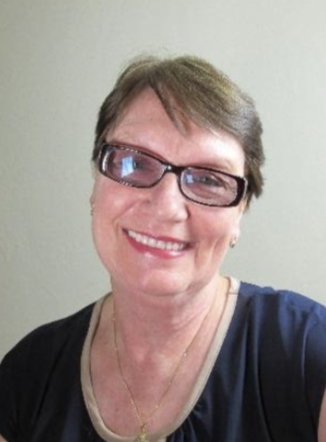Cut Yourself Some Slack: Parenting and Autism
The Importance of Self-Care for Parents and Caregivers of Autistic Children
For parents and caregivers, and especially when caring for an autistic child, it can be very difficult to find time for self-care. The demands and needs are many, and in our desire to provide our children with the best care possible, we tend to overextend ourselves.
 Someone once told me, “There is no such thing as a perfect parent. The only requirement is to be one.” I still smile as I read this and remember how I was as a new parent, caring for the first child that came along.
Someone once told me, “There is no such thing as a perfect parent. The only requirement is to be one.” I still smile as I read this and remember how I was as a new parent, caring for the first child that came along.
Every night I would set out his ironed clothes for the next day, polish his little leather shoes, and make sure the play area and house were spotless. I took pride in having a clean, nearly “perfect” home, and in having my eldest look his very best.
When number two came along, I didn’t keep up quite as well, but let’s say the clothes were ironed every other day, and the shoes were polished not as often.
With number three, I still tried to keep some semblance of order, and the kids still looked neat and clean, but perfection went out the door. I don’t think I have to tell you what happened when numbers four, five, and six arrived.
Fast forward some twenty years, when I started caring for my 6-month-old grandson, Logan. I tried my best to revive those days of perfection, and have things in tip-top shape. However, Logan was a handful, as they say, more so than any of my other children had ever been. I didn’t know then, but learned later, that his hyperactivity and frequent crying were due to autism, sensory processing disorder (SPD), and borderline attention deficit hyperactivity disorder (ADHD), which were officially diagnosed when he was three.
It took me some time to digest the news of his diffabilities, but once I learned more about autism and the importance of early intervention, my tendency for perfection kicked in once again. I was determined to do the very best for him and tried to follow every instruction from his teachers and therapists to a T.
Additionally, I read whatever book, blog, or article I could get my hands on, and tried to participate in any social activities the best I could as well.
After a while, it became obvious that I was not going to be able to keep up, physically and emotionally, with all the demands that come with caring for an autistic child. I was stretched to the limit, and something had to give.
I was fortunate to have met an amazing parent advocate, who became a dear friend in the process. She, herself a mother of an autistic daughter, recognized the problem. Next to having the sole care of my grandson and having to keep up with my online editing work, the pressures of managing school meetings and IEPs to find solutions to numerous incidents, doctor’s and dentist appointments, and the need to work around other family-related issues, were getting to me. Her advice? In short, “Cut yourself some slack!”
I knew she was right, but my circumstances hardly afforded it. Funds were tight, and I didn’t have anyone to help or give me a break from time to time. Still, I knew I needed it—now!
When I thought about it more, I realized I needed a mindset change first. In my desire to do everything so perfectly, and give my grandson the very best at every opportunity, I was over-extending myself. I had to come to grips with the fact that even if I had to skip an activity and do something simpler, like putting my feet up and sitting in the backyard with a cup of tea while my grandson chased butterflies and collected bugs, was not going to hurt him. In fact, it did both of us a world of good.
 One of the key things that helped me find a better balance between taking care of my grandson and taking care of myself was to learn to ask for help and accept it when it was offered. I had always felt bad to ask others to take care of Logan and often declined offers that would have afforded me a break.
One of the key things that helped me find a better balance between taking care of my grandson and taking care of myself was to learn to ask for help and accept it when it was offered. I had always felt bad to ask others to take care of Logan and often declined offers that would have afforded me a break.
Besides not wanting to burden others, it took me a while to realize that it also had to do with trusting others with him. I raised him and knew him in and out, and I worried that others might not recognize some of the things that led to meltdowns, or if he had one, would know how to bring him out of it. I loved him so much and didn’t want him to have to go through anything that might be difficult for him. But in being so protective, I realized I was actually robbing him of some great new experiences—and robbing myself of much-needed rest.
Once I accepted the fact that self-care is not just “a nice thing to do if it works out” but an actual necessity that needs to be scheduled, I began feeling so much better. The challenges were still there, but I was able to cope better and started to take some things in stride.
Learning to cut myself some slack has been an ongoing process—and I am still learning. It isn’t always easy to practice self-compassion, but the benefits of taking care of myself are always worth the effort.
Following are 11 simple, inexpensive ideas for self-care that worked for me. I hope they can help you get started, too.
11 Simple, Affordable Self-Care Ideas
1. Do things you like.
Incorporate activities you like into your schedule, even when you don’t feel like it. Listen to music, work in the garden, engage in a hobby—whatever it is that you enjoy.
2. Pamper yourself.
Light candles and take a warm bath. Read a nice book, or go out for dinner once in a while with family or a close friend.
3. Eat well.
Eat balanced meals to take care of your body. Avoid fast foods as much as possible.
4. Exercise.
Find time to exercise, even if it’s a short walk every day. I used to take a “nature walk” with my grandson almost every day, weather permitting.
5. Get enough sleep.
Get your ZZ’s. Do the best you can to sleep at least 7 hours a night.
6. Laugh.
Laugh out loud. Laughter is the best medicine. Buy a light-hearted book or watch a comedy. Whenever you can, try to find some humor in everyday situations.
7. Keep a journal.
Write down your thoughts and feelings. This helps provide perspective on your situation and serves as an important release for your emotions.
8. Call someone.
Arrange telephone contact with a family member, a friend, an advocate, or a volunteer so that someone calls regularly to be sure everything is all right. You can ask this person for help with contacting other family members or let them know if you need anything.
9. Go out.
Try to set a time for afternoons or evenings out, and ask a family member or friend to be a sitter.
10. Ask for help.
Seek out friends and family to help you so that you can have some time away from home. If it is difficult to leave, invite friends and family over to visit with you. Share some tea or coffee. You must interact with others.
11. Rest.
Last, but certainly not least, permit yourself to rest and do things that you enjoy daily. You will be a better parent or caregiver for it.
(Adapted excerpts from Autism on a Shoestring Budget, [Early] Intervention Made Easier by Ymkje Wideman-van der Laan.

Ymkje Wideman-van der Laan
Ymkje Wideman-van der Laan is an author, public speaker, and Certified Autism Resource Specialist from the Netherlands. After working abroad as a teacher and humanitarian for 25 years, she moved to the US in 2006 and assumed the care of her then 6-month-old grandson, Logan. There were signs of autism at an early age, and the diagnosis became official in 2009. She has been his advocate and passionate about promoting autism awareness and acceptance ever since. Logan is the inspiration behind the Autism Is...? (tinyurl.com/5aj73ydd) series of children’s books she initially wrote for him and later published. Ymkje currently lives in California with her now 15-year-old grandson, and besides writing, presents autism training workshops for early childhood educators, parents, and caregivers. You can read more about her story in her newly released book, Autism on a Shoestring Budget, [Early] Intervention Made Easier (https://tinyurl.com/ysxhxbmf). For more information, you can visit www.autism-is.com, www.facebook.com/AutismIs, and/or contact her at autismisbooks@gmail.com.





